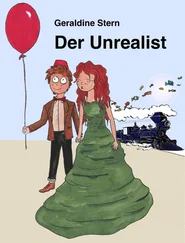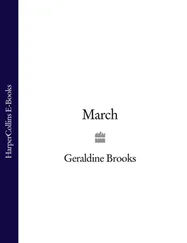Geraldine Mitton - Chelsea
Здесь есть возможность читать онлайн «Geraldine Mitton - Chelsea» — ознакомительный отрывок электронной книги совершенно бесплатно, а после прочтения отрывка купить полную версию. В некоторых случаях можно слушать аудио, скачать через торрент в формате fb2 и присутствует краткое содержание. Жанр: Путешествия и география, foreign_prose, foreign_language, на английском языке. Описание произведения, (предисловие) а так же отзывы посетителей доступны на портале библиотеки ЛибКат.
- Название:Chelsea
- Автор:
- Жанр:
- Год:неизвестен
- ISBN:нет данных
- Рейтинг книги:5 / 5. Голосов: 1
-
Избранное:Добавить в избранное
- Отзывы:
-
Ваша оценка:
- 100
- 1
- 2
- 3
- 4
- 5
Chelsea: краткое содержание, описание и аннотация
Предлагаем к чтению аннотацию, описание, краткое содержание или предисловие (зависит от того, что написал сам автор книги «Chelsea»). Если вы не нашли необходимую информацию о книге — напишите в комментариях, мы постараемся отыскать её.
Chelsea — читать онлайн ознакомительный отрывок
Ниже представлен текст книги, разбитый по страницам. Система сохранения места последней прочитанной страницы, позволяет с удобством читать онлайн бесплатно книгу «Chelsea», без необходимости каждый раз заново искать на чём Вы остановились. Поставьте закладку, и сможете в любой момент перейти на страницу, на которой закончили чтение.
Интервал:
Закладка:
Mitton G. E. Geraldine Edith
Chelsea The Fascination of London
PREFATORY NOTE
A survey of London, a record of the greatest of all cities, that should preserve her history, her historical and literary associations, her mighty buildings, past and present, a book that should comprise all that Londoners love, all that they ought to know of their heritage from the past – this was the work on which Sir Walter Besant was engaged when he died.
As he himself said of it: “This work fascinates me more than anything else I’ve ever done. Nothing at all like it has ever been attempted before. I’ve been walking about London for the last thirty years, and I find something fresh in it every day.”
He had seen one at least of his dreams realized in the People’s Palace, but he was not destined to see this mighty work on London take form. He died when it was still incomplete. His scheme included several volumes on the history of London as a whole. These he finished up to the end of the eighteenth century, and they form a record of the great city practically unique, and exceptionally interesting, compiled by one who had the qualities both of novelist and historian, and who knew how to make the dry bones live. The volume on the eighteenth century, which Sir Walter called a “very big chapter indeed, and particularly interesting,” will shortly be issued by Messrs. A. and C. Black, who had undertaken the publication of the Survey.
Sir Walter’s idea was that the next two volumes should be a regular and systematic perambulation of London by different persons, so that the history of each parish should be complete in itself. This was a very original feature in the great scheme, and one in which he took the keenest interest. Enough has been done of this section to warrant its issue in the form originally intended, but in the meantime it is proposed to select some of the most interesting of the districts and publish them as a series of booklets, attractive alike to the local inhabitant and the student of London, because much of the interest and the history of London lie in these street associations. For this purpose Chelsea, Westminster, the Strand, and Hampstead have been selected for publication first, and have been revised and brought up to date.
The difficulty of finding a general title for the series was very great, for the title desired was one that would express concisely the undying charm of London – that is to say, the continuity of her past history with the present times. In streets and stones, in names and palaces, her history is written for those who can read it, and the object of the series is to bring forward these associations, and to make them plain. The solution of the difficulty was found in the words of the man who loved London and planned the great scheme. The work “fascinated” him, and it was because of these associations that it did so. These links between past and present in themselves largely constitute The Fascination of London.
G. E. M.PART I
The name Chelsea, according to Faulkner and Lysons, only began to be used in the early part of the eighteenth century. During the sixteenth and seventeenth centuries the place was known as Chelsey, and before that time as Chelceth or Chelchith. The very earliest record is in a charter of King Edward the Confessor, where it is spelt Cealchyth. In Doomsday Book it is noted as Cercehede and Chelched. The word is derived variously. Newcourt ascribes it to the Saxon word ceald , or cele , signifying cold, combined with the Saxon hyth , or hyd , a port or haven. Norden believes it to be due to the word “chesel” ( ceosol , or cesol ), a bank “which the sea casteth up of sand or pebble-stones, thereof called Cheselsey, briefly Chelsey, as is Chelsey [Winchelsea?] in Sussex.” Skinner agrees with him substantially, deriving the principal part of the word from banks of sand, and the ea or ey from land situated near the water; yet he admits it is written in ancient records Cealchyth – “chalky haven.” Lysons asserts that if local circumstances allowed it he would have derived it from “hills of chalk.” Yet, as there is neither hill nor chalk in the parish, this derivation cannot be regarded as satisfactory. The difficulty of the more generally received interpretation – viz., shelves of gravel near the water – is that the ancient spelling of the name did undoubtedly end in hith or heth , and not in ea or ey .
BOUNDARIES
The dividing line which separated the old parish of Chelsea from the City of Westminster was determined by a brook called the Westbourne, which took its rise near West End in Hampstead. It flowed through Bayswater and into Hyde Park. It supplied the water of the Serpentine, which we owe to the fondness of Queen Caroline for landscape gardening. This well-known piece of water was afterwards supplied from the Chelsea waterworks. The Westbourne stream then crossed Knightsbridge, and from this point formed the eastern boundary of St. Luke’s parish, Chelsea. The only vestige of the rivulet now remaining is to be seen at its southern extremity, where, having become a mere sewer, it empties itself into the Thames about 300 yards above the bridge. The name survives in Westbourne Park and Westbourne Street. The boundary line of the present borough of Chelsea is slightly different; it follows the eastern side of Lowndes Square, and thence goes down Lowndes Street, Chesham Street, and zigzags through Eaton Place and Terrace, Cliveden Place, and Westbourne Street, breaking off from the last-named at Whitaker Street, thence down Holbein Place, a bit of Pimlico, and Bridge Road to the river.
In a map of Chelsea made in 1664 by James Hamilton, the course of the original rivulet is clearly shown. The northern boundary of Chelsea begins at Knightsbridge. The north-western, that between Chelsea and Kensington, runs down Basil and Walton Streets, and turns into the Fulham Road at its junction with the Marlborough Road. It follows the course of the Fulham Road to Stamford Bridge, near Chelsea Station. The western boundary, as well as the eastern, had its origin in a stream which rose to the north-west of Notting Hill. Its site is now occupied by the railway-line (West London extension); the boundary runs on the western side of this until it joins an arm of Chelsea Creek, from which point the Creek forms the dividing line to the river.
The parish of Chelsea, thus defined, is roughly triangular in shape, and is divided by the King’s Road into two nearly equal triangles.
An outlying piece of land at Kensal Town belonged to Chelsea parish, but is not included in the borough.
The population in 1801 was 12,079. In the year 1902 (the latest return) it is reckoned at 73,842.
Bowack, in an account of Chelsea in 1705, estimates the inhabited houses at 300; they are now computed at 8,641.
HISTORY
The first recorded instance of the mention of Chelsea is about 785, when Pope Adrian sent legates to England for the purpose of reforming the religion, and they held a synod at Cealchythe.
In the reign of Edward the Confessor Thurstan gave Chilchelle or Chilcheya, which he held of the King, to Westminster Abbey. This gift was confirmed by a charter which is in the Saxon language, and is still preserved in the British Museum. Gervace, Abbot of Westminster, natural son of King Stephen, aliened the Manor of Chelchithe; he bestowed it upon his mother, Dameta, to be held by her in fee, paying annually to the church at Westminster the sum of £4. In Edward III.’s reign one Robert de Heyle leased the Manor of Chelsith to the Abbot and Convent of Westminster during his own lifetime, for which they were to make certain payments: “£20 per annum, to provide him daily with two white loaves, two flagons of convent ale, and once a year a robe of Esquier’s silk.” The manor at that time was valued at £25 16s. 6d. The Dean and Chapter of Westminster hold among their records several court rolls of the Manor of Chelsea during the reigns of Edward III. and Richard II. With the exception that one Simon Bayle seems to have been lessee of the Manor House in 1455, we know nothing definite of it until the reign of Henry VII., after which the records are tolerably clear. It was then held by Sir Reginald Bray, and from him it descended to his niece Margaret, who married Lord Sandys. Lord Sandys gave or sold it to Henry VIII., and it formed part of the jointure of Queen Catherine Parr, who resided there for some time with her fourth husband, Lord Seymour.
Читать дальшеИнтервал:
Закладка:
Похожие книги на «Chelsea»
Представляем Вашему вниманию похожие книги на «Chelsea» списком для выбора. Мы отобрали схожую по названию и смыслу литературу в надежде предоставить читателям больше вариантов отыскать новые, интересные, ещё непрочитанные произведения.
Обсуждение, отзывы о книге «Chelsea» и просто собственные мнения читателей. Оставьте ваши комментарии, напишите, что Вы думаете о произведении, его смысле или главных героях. Укажите что конкретно понравилось, а что нет, и почему Вы так считаете.












